
Geofocus-Revista Internacional de Ciencia y TecnologIa de la InformaciOn GeogrAfica
Scope & Guideline
Innovating Geography: Bridging Research and Real-World Impact
Introduction
Aims and Scopes
- Geospatial Analysis and Modeling:
The journal focuses on the application of various geospatial analysis techniques, including GIS and remote sensing, to address real-world problems such as environmental degradation, urban planning, and public health. - Environmental Monitoring and Assessment:
Research often evaluates environmental changes and impacts, utilizing advanced methodologies to assess human and natural influences on ecosystems, reflected in studies on agricultural expansion and wetland changes. - Public Health Geography:
The journal covers studies that explore the relationship between geography and health, analyzing spatial disparities in health outcomes and the effectiveness of public health interventions through geoinformatics. - Technological Innovations in Geospatial Data:
There is a consistent emphasis on the development and implementation of new technologies, such as drones and advanced sensors, to enhance geospatial data collection and analysis. - Socio-Economic Spatial Studies:
The journal addresses socio-economic issues through spatial analyses, investigating topics like accessibility to public services, social vulnerability, and the impact of urbanization on different demographics.
Trending and Emerging
- Climate Change and Environmental Degradation:
There is an increasing focus on studies that assess the impacts of climate change and human activities on the environment, highlighting the need for sustainable practices and the monitoring of ecological health. - Use of Advanced Remote Sensing Technologies:
The integration of drone technology and multispectral sensors for environmental monitoring and agricultural assessments is on the rise, showcasing innovations in data collection and analysis. - Social Vulnerability and Urban Health:
Emerging research themes address the intersections of social vulnerability and public health outcomes, reflecting a growing awareness of the spatial dimensions of health disparities. - Big Data and Mobility Analysis:
The application of big data analytics, particularly in understanding mobility patterns through social media and telecommunications data, is gaining traction, emphasizing the importance of real-time data in geographic studies. - Interdisciplinary Approaches to Geographic Information Science:
There is a trend towards blending geographic information science with other disciplines, such as public health, environmental science, and urban studies, promoting holistic analyses of complex issues.
Declining or Waning
- Historical Landscape Studies:
Research focusing on historical landscapes has become less frequent, possibly overshadowed by more contemporary issues such as urbanization and climate change impacts. - Traditional Land Use Studies:
Studies centered on conventional land use patterns are declining, as newer methodologies and technologies provide more dynamic approaches to understanding land use changes. - Static Data Representation:
There is a noticeable decrease in papers that rely solely on static data representation methods, as the field moves towards more interactive and real-time data analysis techniques. - Basic GIS Applications:
Papers that focus on basic GIS applications without integrating advanced analytical techniques or technologies have seen a decline, indicating a shift towards more sophisticated and innovative approaches.
Similar Journals

Cuadernos de Investigacion Geografica
Connecting Researchers for a Sustainable FutureCuadernos de Investigacion Geografica, published by UNIV RIOJA, SERV PUBLICACIONES, stands as a premier open-access journal dedicated to advancing knowledge in the fields of geography, environmental science, and earth sciences. Since its inception in 1983, this journal has fostered innovative research and critical discourse, currently holding a distinguished position in Scopus with impressive quartile rankings, including Q2 in both Earth and Planetary Sciences, and Geography, Planning and Development, reflecting its impact and relevance. With an aim to present high-quality, peer-reviewed articles that contribute to the understanding of our planet and its systems, Cuadernos de Investigacion Geografica welcomes submissions from researchers, professionals, and students alike, fostering a collaborative environment that spans across diverse geographical contexts. Operating from its hub in Logroño, Spain, this journal continues to be a vital resource for anyone engaged in geographical research and environmental analysis, providing open access to enhance knowledge sharing and innovation in these dynamic fields.

Revista Geografica Venezolana
Unveiling Insights into Environmental Challenges in Latin AmericaRevista Geografica Venezolana is a prominent academic journal published by the Instituto de Geografía y Conservación de Recursos Naturales, Universidad de los Andes, Venezuela. With ISSN 1012-1617 and E-ISSN 2244-8853, it has been a vital platform for scholarly discourse since its inception in 1981, addressing essential topics within the fields of Earth-Surface Processes and Geography, Planning, and Development. Despite its current categorization in Q4 quartiles and lower rankings in Scopus, the journal serves as an important resource for researchers and practitioners, offering insights that contribute to the understanding of geographical and environmental challenges in Latin America and beyond. The journal aspires to foster interdisciplinary dialogue and promote research that tackles pressing societal issues through geographical perspectives. Readers are encouraged to explore its rich content and engage with contemporary research methodologies and findings in the geographical sciences, making it a critical reference for students, researchers, and professionals in the field.
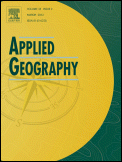
APPLIED GEOGRAPHY
Fostering collaborations for a thriving geospatial community.APPLIED GEOGRAPHY, published by Elsevier Science Ltd, stands as a premier journal within the fields of environmental science, geography, planning and development, as well as tourism, leisure, and hospitality management. With an impressive 2023 impact factor that reflects its high citation rates, this journal is ranked Q1 in several categories, underscoring its significance and influence in interdisciplinary research. Covering a broad range of topics from innovative environmental practices to spatial analysis and socio-economic factors affecting tourism, APPLIED GEOGRAPHY promotes insightful discussions and practical applications that are vital for advancing knowledge and practice in these fields. Researchers, professionals, and students will find the journal's rigorous peer-reviewed articles invaluable for staying informed about the latest trends and findings impacting the geospatial landscape. As an essential resource, APPLIED GEOGRAPHY aims to foster interdisciplinary collaborations and inspire scholarly dialogue, making it a cornerstone for those engaged in the study and application of geography across various sectors.

Cadernos de Geografia
Innovating Insights into Contemporary Geographical IssuesCadernos de Geografia is a distinguished biannual journal published by UNIVERSIDADE DE COIMBRA, FACULDADE DE LETRAS, dedicated to the field of geography and related social sciences. With its ISSN 0871-1623 and E-ISSN 2183-4016, this journal has been a prominent platform for the dissemination of high-quality research since it became open access in 2012. Situated in Coimbra, Portugal, it aims to foster academic excellence by providing an inclusive space for innovative studies that explore contemporary geographical issues. Cadernos de Geografia encourages submissions that address diverse aspects of geography, ranging from environmental studies to urban planning, making it an invaluable resource for researchers, professionals, and students alike. As a part of the growing trend in open-access publishing, it enhances the global reach and accessibility of geographical research, thereby contributing to the enrichment of knowledge in the field.
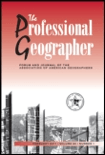
PROFESSIONAL GEOGRAPHER
Unveiling Insights in Geography and Earth-Surface ProcessesPROFESSIONAL GEOGRAPHER is a prominent journal in the fields of geography and earth-surface processes, published by Routledge Journals, Taylor & Francis Ltd. With a rich history dating back to 1949 and continuing through 2024, it serves as a vital platform for researchers, professionals, and students to explore and disseminate groundbreaking research and insights within the geographical sciences. The journal holds a respectable impact factor, placing it in the Q2 quartile for both Earth-Surface Processes and Geography, Planning and Development as of 2023, highlighting its importance in these critical academic areas. The journal ranks #273 out of 821 in Geography and Planning and #70 out of 179 in Earth and Planetary Sciences on Scopus, reflecting its robust contribution to advancing knowledge in social sciences. Although it does not currently offer open access options, it still provides invaluable content that influences pedagogy and research in geography. Its comprehensive scope invites a wide range of geospatial topics, encouraging interdisciplinary dialogue and collaboration across the global academic community.
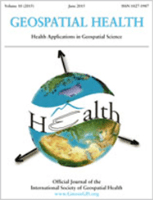
Geospatial Health
Advancing Research at the Crossroads of Health and Space.Geospatial Health is an esteemed academic journal dedicated to the intersection of geography, health policy, and social sciences, published by UNIV NAPLES FEDERICO II. Since its inception in 2006, this Open Access journal has been pivotal in disseminating valuable research that examines health-related issues through a geographical lens. With an impact factor that places it in the Q3 category across multiple disciplines including Geography, Health Policy, and Medicine, it serves as a vital resource for researchers, practitioners, and scholars alike. Located in Naples, Italy, the journal aims to foster interdisciplinary collaboration and provide insights that can influence policy and practice in health and environmental sectors. With its commitment to accessibility and high-quality research, Geospatial Health continues to enrich the fields it represents, inviting contributions that explore the intricate dynamics between health and spatial determinants.

Boletin de la Asociacion de Geografos Espanoles
Bridging disciplines to shape the future of our environments.Boletin de la Asociacion de Geografos Espanoles is a leading open-access journal dedicated to advancing knowledge in the fields of geography, urban studies, and environmental science. Published by the ASOCIACION ESPANOLES DE GEOGRAFIA, this esteemed journal has been a vital platform for geographers and researchers since 1984, facilitating the dissemination of high-quality research and insights. With an ISSN of 0212-9426 and E-ISSN of 2605-3322, the journal has been recognized for its contributions, currently ranking in Q3 in Earth-Surface Processes, Environmental Science, and Geography, Planning and Development, as well as Q2 in Urban Studies for 2023. The journal’s accessibility ensures a broad audience reach, supporting the engagement of researchers and professionals alike. Located in Madrid, Spain, and publishing from 2006 to 2024, the Boletin de la Asociacion de Geografos Espanoles stands as an essential resource for those invested in the geographical sciences and related disciplines.

GEOJOURNAL
Bridging Theory and Practice in Urban StudiesGEOJOURNAL, published by SPRINGER, is a distinguished academic journal that occupies a pivotal role in the fields of geography, planning, and development. With a robust ISSN of 0343-2521 and an E-ISSN of 1572-9893, it has been a cornerstone of scholarly communication since its inception in 1977. Operating from the Netherlands, GEOJOURNAL offers insightful research articles that delve into the dynamics of spatial analysis, environmental management, urban studies, and regional development, thus catering to a diverse readership of researchers, professionals, and students alike. The journal boasts an impressive Scopus ranking of #176 out of 821 in its category, positioning it in the top 22% percentile while maintaining a Q2 quartile ranking in Geography, Planning, and Development as of 2023. With access options available, GEOJOURNAL remains a vital platform for disseminating cutting-edge research and fostering academic collaboration, indispensable for those engaging with contemporary geographic challenges and innovative solutions. Engage with GEOJOURNAL to enrich your understanding and contribute to critical discussions in this ever-evolving field.
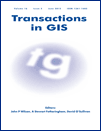
Transactions in GIS
Connecting Theory and Practice in GISTransactions in GIS is a premier academic journal published by WILEY, dedicated to advancing the field of Geographic Information Science (GIS). With an ISSN of 1361-1682 and an E-ISSN of 1467-9671, this journal has continually contributed valuable insights since its inception in 1996, transforming the landscape of GIS research and application. Covering a broad scope within Earth and Planetary Sciences, it holds a notable Q2 ranking and stands in the 74th percentile among its peers as per Scopus rankings. The journal serves as a critical platform for researchers, professionals, and students who seek to disseminate and engage with innovative GIS methodologies, applications, and theoretical advancements. With a commitment to quality and rigor, Transactions in GIS remains a vital resource for those at the forefront of geographic research and analysis.
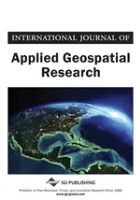
International Journal of Applied Geospatial Research
Exploring the intersection of research and practical application.International Journal of Applied Geospatial Research is an esteemed publication dedicated to advancing the field of geospatial research. Published by IGI Global, this journal provides a platform for innovative studies from 2010 to 2024 that encourage multidisciplinary contributions across Earth and planetary sciences and geography. While currently not offering open access, the journal's focus on applied research ensures that it remains highly relevant to both academics and industry professionals alike. With an ISSN of 1947-9654 and an E-ISSN of 1947-9662, it has been indexed in various databases, reflecting its emerging significance with rankings such as Q4 in Earth and Planetary Sciences and Geography according to Scopus, placing it at the intersection of critical research and practical application. Researchers, professionals, and students can expect insightful articles that enhance understanding and drive innovation in geospatial applications essential for informed decision-making in a rapidly changing world.